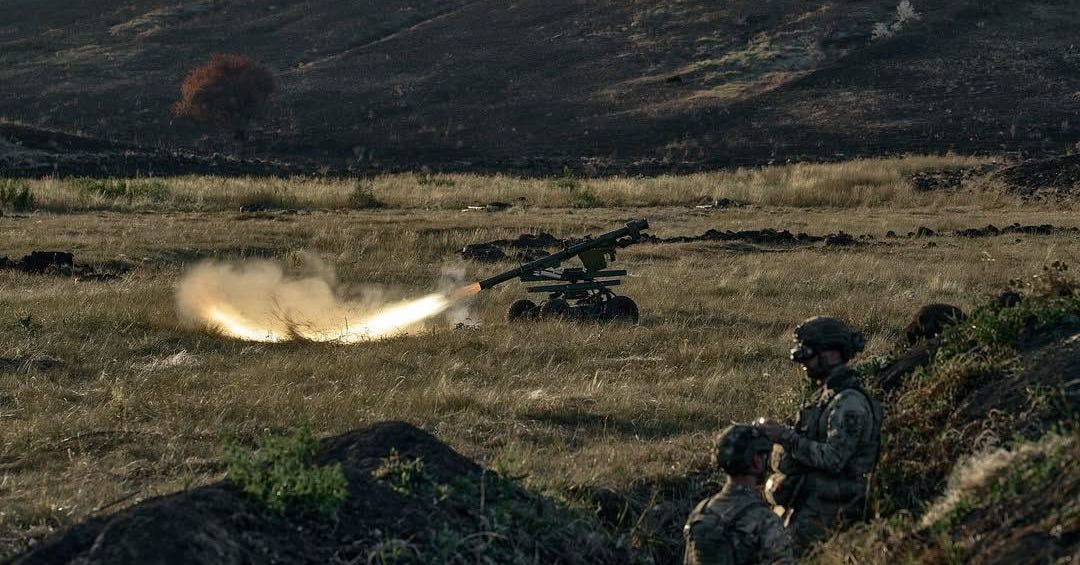Ukraine's Igla Missile Robot Is Made for Ambushing Russian Helicopters
The four-wheel 'bot could lie in wait
Ukrainian forces have bolted an Igla shoulder-fired air-defense missile to a four-wheel ground robot—and added a camera and remote controls so a distant operator wearing a virtual-reality headset can aim and fire the 25-pound missile at drones, helicopters and airplanes as far as three miles away.
It’s a great idea—and the latest example of robotics improvisation by the manpower-starved Ukrainian military. “Russia can afford to send wave after wave of soldiers to die on Ukrainian soil,” war correspondent David Kirichenko explained. “By contrast, Ukraine must turn to technology.”
Already the world’s leader in unmanned aerial vehicles, Ukraine is now turning its attention to a much more challenging field of robotics: ground robots, which unlike UAVs must navigate difficult terrain that tends to block radio signals.
“Ground robotic platforms are already proving their effectiveness in logistics, evacuation and fire-support,” Oleksandr, the platoon commander overseeing ground robots for the Antares Battalion of the Rubizh Brigade, told Kirichenko. “Over the next year, their role will only grow.”
Man-portable air-defense systems such as the Soviet-designed Igla and the American Stinger tend to be the most forward air-defenses in a given army. Their operators hide in dugouts or treelines, scanning for incoming enemy aircraft. When one passes within range—normally just a few miles—the MANPADS gunner steps out, fires his (usually) infrared-guided missile and then scurries back under cover. (See a Ukrainian MANPADS shooter in action in the video below.)
Roboticizing MANPADS opens up opportunities for battalion commanders. Consider the U.S. Army’s Training Circular 7-100.2, which proposes various methods for air-defense ambushes.
Surprise!
“Single-launcher MANPADS ambushes may be set up on wooden platforms built in treetops to catch aircraft flying low over a forest,” the circular advises. Or a MANPADS team can be “dropped off” near or inside contested terrain “by a reconnaissance patrol en route to conduct a reconnaissance mission.”
The unit or weapon assigned to an air-defense ambush usually occupies the site under cover of darkness or poor visibility conditions. The unit or weapon is carefully camouflaged and keeps all its emitters off or in ‘dummy load’ until ordered to engage a target.
It may assume a hide position and establish local ground security and air observers. Depending on the unit or weapon involved and the situation, it may be able to receive automated surveillance and target tracking data from its parent unit.
More than one air-defense ambush, involving more than one weapon type may be established along an air avenue of approach. These may work independently or in concert, depending on the situation.
Finally, “the MANPADS team may or may not be picked up by the returning [recon] patrol,” according to the circular. “If not, they may exfiltrate on their own and possibly rendezvous at a different location.”
Stealth, concealment, patience and a high tolerance for risk on the exfil: these are the qualities of a successful MANPADS ambush. It’s not hard to see how a robot with a remote operator, or several operators working in shifts, is better suited to the task than human beings who get tired, restless, hungry and scared.
Robots “reduce risks for personnel, automate routine or dangerous tasks and enhance the overall tactical flexibility of units,” Oleksandr explained. Air-defense ambushes, it turns out, are both routine—that is, often dull—and occasionally dangerous.
Imagine a Ukrainian brigade defending a dangerous stretch of the front line in Ukraine, perhaps one where the Russian enjoy local air-superiority. Now imagine that brigade seeding the no-man’s-land with patient ground robots armed with Iglas or Stingers.
A few robots firing a few missiles at the right time could have a disproportionate deterrent effect on Russian air ops. “The surprise destruction of one or two lead aircraft on what the enemy thought was a clear avenue of approach could cause an enemy air assault to be called off or seriously disrupted,” the U.S. Army training guide concludes.



